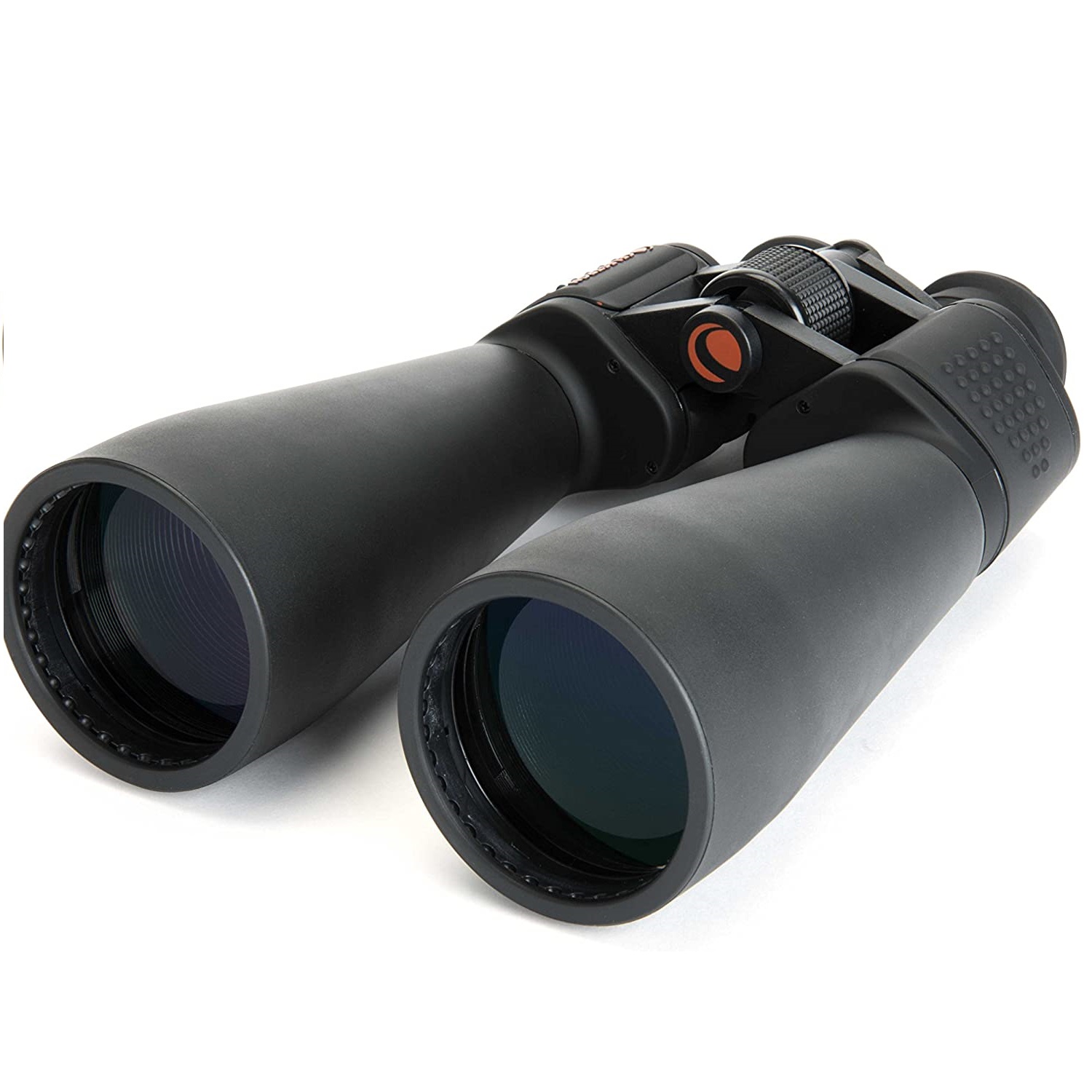
- Brand Celestron
- Material Synthetic
- Eye Relief 13 Millimeters

- Brand Bushnell
- Color Black
- Eye Relief 9 Millimeters
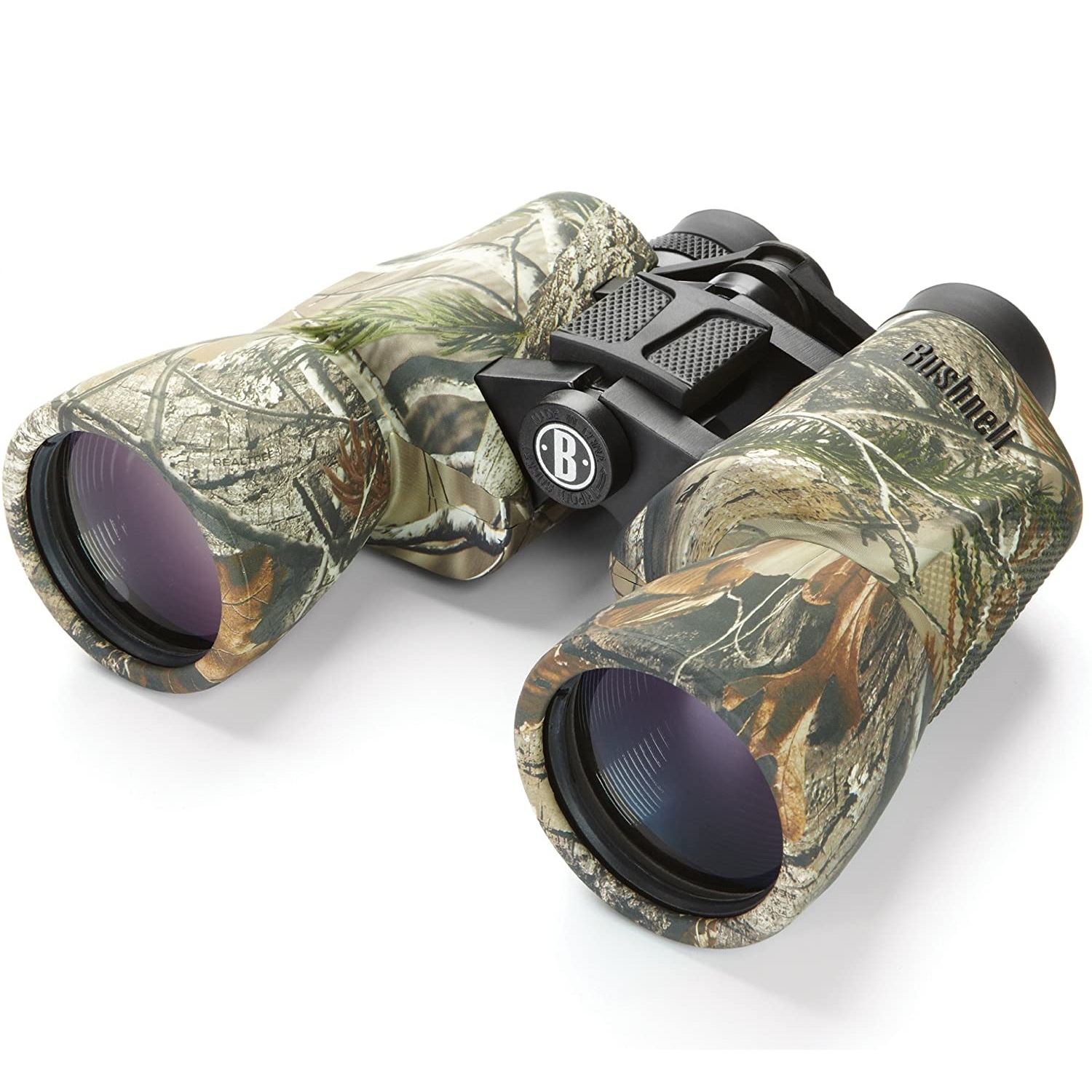
- Brand Bushnell
- Color Realtree AP
- Eye Relief 10 Millimeters
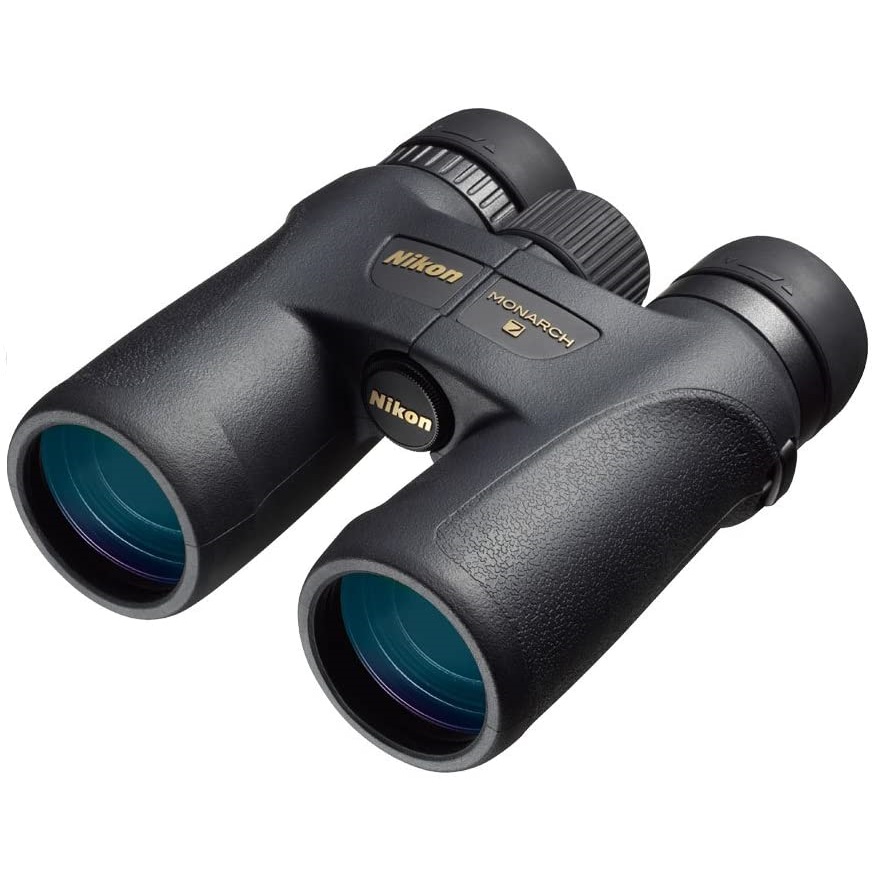
- Brand Nikon
- Color Black
- Eye Relief 17.1 Millimeters

- Brand TecTecTec
- Color Camo
- OLD 42 Millimeters
Choose the Best Binocular for Deer Hunting
Customer’s Choice: the Best Rated Binoculars for Deer Hunting
13 users answered this survey. Please help us improve this review!
If you’re looking for the greatest deer hunting binoculars, keep reading. In this article, we’ll give you all of the information you need to make an informed selection about which binoculars are right for you. We’ll go through the various questions. Not only will we show you why our top-rated binoculars are the best choice, but we’ll also walk you through picking out the finest binoculars for your requirements and budget.
Binoculars for Deer Hunting
Deer hunting season is upon us, and if you’re like most hunters, you’re in the market for a new pair of binoculars. But, with so many different manufacturers and types on the market, how can you ever be sure which ones are appropriate for you?
Table of Contents
Celestron – SkyMaster 25X70 Binocular – Outdoor and Astronomy Binoculars
 This is one of the most favored models for deer hunting. It is a powerful tool with great optics. The large aperture allows you to see long distance. The Celestron also comes with a carrying case which is always helpful.
This is one of the most favored models for deer hunting. It is a powerful tool with great optics. The large aperture allows you to see long distance. The Celestron also comes with a carrying case which is always helpful.
Specifications
- Material Synthetic
- Eye Relief 13 Millimeters / 0.51 inches
Porro Prism - Exit Pupil: 0.11 inches
- 25x magnification
- Linear Field of View (at 1000 yds.) at 1000 m): 141 feet (47 m)
- Dimensions 4.3 x 11 x 8.7 inches
- Weight 3.25 pounds
Bushnell Falcon 10×50 Wide Angle Binoculars
 If you’re looking for a good pair of binoculars to take deer hunting, this is a great option. They have a wide viewing angle and 50mm lenses, delivering great clarity and detail. They’re also water- and fog-proof, so you won’t have to worry about them becoming wet or fogging up in humid weather.
If you’re looking for a good pair of binoculars to take deer hunting, this is a great option. They have a wide viewing angle and 50mm lenses, delivering great clarity and detail. They’re also water- and fog-proof, so you won’t have to worry about them becoming wet or fogging up in humid weather.
They are also relatively lightweight and come with a carrying case, so they’re easy to transport. And if you need glasses to see through them, no problem – they come with eyecups.
Specifications
- Color Black
- Material Rubberized
- Eye Relief 9 mm
- Exit Pupil 5 mm
- Eye Relief 9 mm
- Close focusing distance 25 Feet
- Weight 27 Ounce
- Dimensions 9.3 x 8.2 x 4.2 inches
Bushnell PowerView 10x50mm Porro Prism Instafocus Binoculars, Realtree AP
 This is a good choice for deer hunting, as it offers great value for the money. The objective lens of these binoculars is 50mm, which provides you with a good perspective on your target. It also has an Instafocus system that allows you to focus quickly and accurately.
This is a good choice for deer hunting, as it offers great value for the money. The objective lens of these binoculars is 50mm, which provides you with a good perspective on your target. It also has an Instafocus system that allows you to focus quickly and accurately.
Specifications
- Color Realtree AP
Material Rubber - Eye Relief 10 Millimeters
- View 10×50 milliliter
- 10x magnification
- 50mm objective lenses
- Dimensions LxWxH 2.68*6.61*6.61 inches
- Weight 1.6 Pounds
Nikon 7548 MONARCH 7 8×42 Binocular (Black)
 The Monarch series has been around for a while, and they’re definitely a classic. Nikon’s Monarch binoculars are known for being tough and durable – perfect for hunting in any environment. They’re also incredibly versatile, with a wide range of models to choose from depending on your needs
The Monarch series has been around for a while, and they’re definitely a classic. Nikon’s Monarch binoculars are known for being tough and durable – perfect for hunting in any environment. They’re also incredibly versatile, with a wide range of models to choose from depending on your needs
The 7548 MONARCH is one of their most favored models, and it’s easy to see why. It’s perfect for deer hunting.
Specifications
- Dimensions LxWxH 5.7 x 5.1 x 1.65 inches
- Weight 1.3 Pounds
- Color Black
- Material Rubber
TecTecTec BPRO Wild Camo 10×42 Hunting Binoculars Outdoors Bird Watching HD Professional Binoculars
 The next time you’re in the market for a new pair of binoculars, consider this one. They are specifically designed for deer hunting, and they come with a number of features that make them perfect for the job.
The next time you’re in the market for a new pair of binoculars, consider this one. They are specifically designed for deer hunting, and they come with a number of features that make them perfect for the job.
For starters, the optics are top-notch, providing you with crystal clear images of your prey. Additionally, the BPRO Wild Camo is equipped with a phone mount, so you can easily document your hunt. And finally, they come with a carrying bag and strap, making them easy to transport into the woods.
Specifications
- Material Rubber
- Roof Prism
- Focus Type Manual
- Magnification 10x
- 42 mm lenses
- Dimensions : 6.30in x 2.72in x 7.09in (16cm x 6.9cm x 18 cm)
- Weight: 24.8 ounce (703 g)
- Field of Vision : 305 ft @ 1000 yds (102m @ 1000 m)
Buyer’s Guide
Deer Hunting
Deer hunting is a challenging type of sport that requires great skills, knowledge, and patience. This guide will answer some common questions about choosing the right binoculars and offer some tips to help you make the best decision.
When it comes to deer hunting, having a good set of binoculars is essential. This is because deer are very shy animals and they tend to stay hidden in thick brush or woods. If you want to have any chance at all of spotting a deer, you need binoculars that can give you a clear view from afar.

In this guide, we will go over some of the things you need to look for when choosing binoculars.
How to Choose the Best Binoculars for Deer Hunting
If you want to hunt deer, having a decent pair of binoculars might make all the difference. But with all the different brands and models on the market, how do you choose the right pair? Here are a few things to keep in mind when shopping for binoculars.
Binocular Features to Consider
There are a few key features to look for when shopping for binoculars. First, you’ll want to consider the magnification. For deer hunting, you’ll want a pair of binoculars with at least an eight times magnification. This allows you to see your target clearly, even from a distance.
Next, you’ll want to think about the objective lens size. The bigger the objective lens, the more light it lets in and the brighter your image will be. For deer hunting, you’ll want an objective lens size of at least 42 millimeters.
Finally, ensure the binoculars are water and fog proof. This is especially important if you’re going to be hunting in inclement weather. [1]
Binoculars for Close-Range Hunting
If you’re hunting in thick woods or brush, you’ll want a close-range option. The best binoculars in these situations have a short minimum focal distance. This means you can focus on an object as close as five feet away and still see it clearly. A wide field of view is also important so you can scan your surroundings easily.
Some good close-range binoculars options include the Nikon Prostaff HD 12×50 Binoculars and the Bushnell H20 Waterproof Binoculars.
Binoculars for Long-Range Viewing
If you’re planning on deer hunting from a distance, then you’ll need a pair of binoculars that can provide clear and bright images at long range. Look for binoculars with a high magnification power – at least 12x – and large objective lenses. These will help you to see your target clearly, even when it’s far away.
Tips for Steady Binocular Glassing
One of the worst feelings in hunting is getting a bead on a buck, only to have him bound off before you can get a shot. It happens to everyone at some point or another, but there are ways you can minimize how often it happens to you. One of those ways is using a good set of binoculars.
There are all sorts of different binoculars out there on the market these days.
If you want to hunt deer, you must use a pair that is capable of doing the task.Let’s look at each of these criteria one by one to see what makes for a good pair of binoculars while deer hunting.
The first thing you need to be able to do when deer hunting is to see clearly. This means that you need a pair of binoculars with a good light gathering ability. The amount of light that a pair of binoculars can gather is determined by the size of the lenses. Larger lenses can gather more light and allow one to see better in low-light situations.
The next is to keep the binoculars steady, even if you’re not using a tripod. You need a pair of binoculars with good image stabilization. It helps to reduce the amount of shaking and blurriness that you’ll see when you’re trying to look through the binoculars.
The last is to find and track deer quickly and easily. You need a pair of binoculars with a good field of view. The field of view is the amount of area that you can see when you’re looking through the binoculars. The larger the field of view, the easier it will be to track and find deer.
Binocular Terms
When shopping for binoculars, you’ll come across some important terminology. Here are some key terms and what they mean:
- Prism type: This is the optical system used in binoculars. There are two distinct types of prisms – Porro and roof. Roof prism are less expensive, but porro prism produce superior picture quality.
- Magnification: This is the level of detail you’ll be able to see when looking through your binoculars. Most deer hunting binoculars have a magnification of at least seven times.
- Objective lens: This is the lens located at the front of the binocular barrel. It’s also worth noting that the brightness of your eyesight will be impacted by this.
- Field of view: This is the distance in front of them that you can see. A wider field of vision is ideal for scanning an area for deer.
- Exit pupil: This is the size of the beam of light that exits the eyepiece. The bigger the exit pupil, the easier it will be to see in various conditions. [2]
Factors to Consider When Selecting the Best Binoculars for Deer Hunting
When it comes to selecting the finest binoculars for deer hunting, there are a few things to consider.
Magnification
Magnification is one of the most significant aspects to consider. You’ll want to make sure that your binoculars have enough magnification power to allow you to see clearly at long distances.
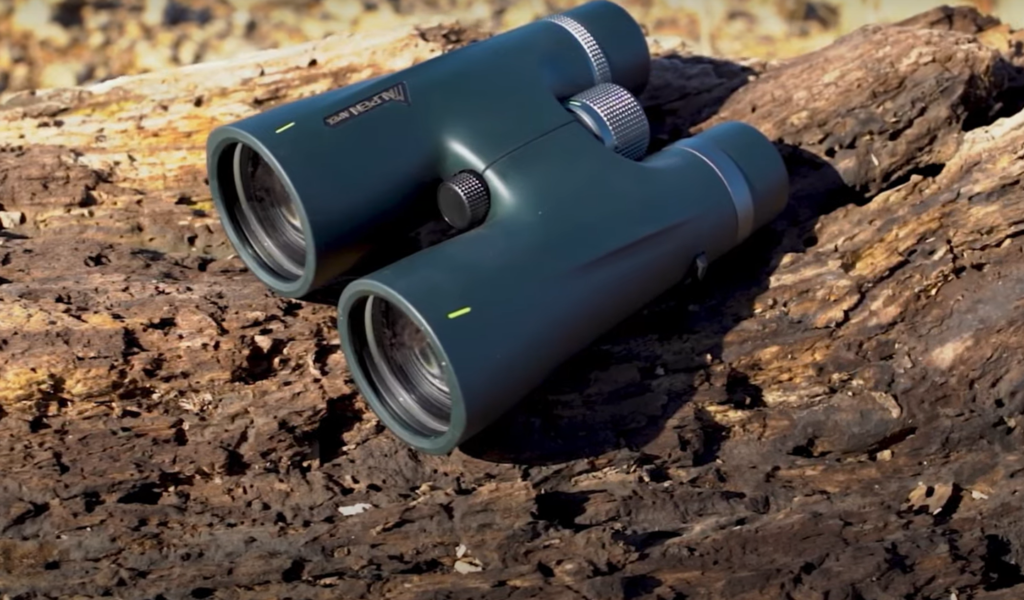
Deer are notoriously skittish creatures, so being able to see them from a distance is crucial.
Objective Size
The objective size is the second factor to consider. The larger the objective lens, the more light that will be able to enter.
Field of View
Another important aspect when choosing deer hunting binoculars is the field of view. Wide field of view is crucial for deer hunting since you’ll want to be able to scan vast areas for them. A wider field of view makes it easier to track moving targets.
Exit Pupil and Relative Brightness Index
The exit pupil is the final factor to consider when selecting deer hunting binoculars. This is the diameter of the beam of light that exits the eyepiece. A larger exit pupil will allow for a brighter image. The relative brightness index is a measurement of the brightness of an object seen through binoculars. A higher relative brightness index indicates a brighter image.
Prism Type
Porro prisms create a three-dimensional image, while roof prisms create a flat image. Roof prisms are smaller and lighter than Porro prisms, but they are also more expensive.
Lenses
The lenses in binoculars are made of glass or plastic. Glass lenses are optically superior to plastic lenses, but they are also heavier and more fragile. Plastic lenses are lighter and more durable, but they don’t transmit light as well as glass lenses.
Coated
Binoculars with coated lenses have a thin layer of material applied to the surface of the lenses. This coating aids in the reduction of glare and increase of light transmission.
Fully Coated
The glass in a fully coated lens has a single layer of anti-reflective coating on both sides. This is the most common type of lens coating. It’s usually used on the exterior of plastic lenses.
Multi-Coated
On one side of the glass, these lens has several layers of anti-reflective protection. The surface of glass lenses is usually coated with this type of finish.
Fully Multi-Coated
A completely multi-coated lens has two layers of anti-reflective coating on both sides of the glass, similar to a bifocal contact lens. This type of coating is usually applied to the surface of glass lenses.
Focus Type
There are two types of focus systems used in binoculars: center and individual. Center focus systems adjust the lenses in the center of the binoculars, while individual focus systems adjust the lenses in each eyepiece.
Center Focus System
A center focus system uses a single knob to adjust the lenses in the center of the binoculars. This type of system is simple to use and can be adjusted with one hand.
Individual Focus System
An individual focus system uses separate knobs to adjust the lenses in each eyepiece. This type of system allows for more precise focusing, but it can be more difficult to use.
Interpupillary Distance Adjustment
The interpupillary distance is the distance between eyes. Most binoculars have an interpupillary distance adjustment that allows you to customize the fit of the binoculars to your eyes. This is important because it helps to reduce eye fatigue.
Image Stabilization
Image stabilization is a feature that reduces image blur caused by hand movement. This is especially useful when hunting from a moving platform, such as a boat or ATV.
Binoculars with image stabilization use electromagnets to counteract hand movement. This allows you to see a clear image, even when your hands are moving.
Eye Relief
This is the distance between eyes and the lenses. A longer eye relief is better because it allows you to see a clear image even if you are not looking through the center of the lenses.
Optical Coatings
Optical coatings are applied to the surface of lenses to improve light transmission.
There are three types of optical coatings: anti-reflective, phase-correction, and polarizing.
Anti-Reflective Coatings
They are applied to the surface of lenses to reduce glare. The surface of glass lenses is typically coated with a similar substance.
Phase-Correction Coatings
Phase-correction coatings are applied to the surface of lenses to improve image quality. This type of coating is often used on the surface of glass lenses.
Polarizing Coatings
Polarizing coatings are applied to the surface of lenses to reduce glare and increase contrast. This is often the case with glass lens surfaces.[3]
How to Use Binoculars for Deer Hunting?
Deer hunting is a challenging but rewarding sport. In order to be successful, you need to have the right equipment. Binoculars are an essential piece of gear for any hunter, and choosing the best pair can make all the difference in your success. Here is a guide to choosing the best binoculars for deer hunting.
Step One: Determine the Type of Binoculars You Need
There are two main types of binoculars: Porro prism and roof prism. Porro prism binoculars are typically cheaper and have a wide field of view, while roof prism binoculars are more compact and have better image quality. However, both types of binoculars can be used for deer hunting.
Step Two: Choose the Right Magnification
The next thing to consider is magnification. Most hunters prefer binoculars with a magnification of at least eight times, but you may want a higher magnification if you plan to do a lot of long-range shooting. Keep in mind that higher magnifications can make it more difficult to hold the binoculars steady, so you may want to consider a lower magnification if you have shaky hands.
Step Three: Consider the Size and Weight
Size and weight are also important considerations when choosing binoculars. You don’t want a pair that is so heavy that it is difficult to carry, but you also don’t want one that is so small that it is difficult to hold steady. The best binoculars for deer hunting strike a balance between these two factors.
Step Four: Pick Your Price Range
Finally, you need to decide how much you are willing to spend on a pair of binoculars. Binoculars can range in price from around $100 to more than $1000, so it’s important to pick a price range that you are comfortable with. Keep in mind that you don’t necessarily need to spend a lot of money to get a good pair of binoculars.
One of the most important things to consider when deer hunting is what kind of terrain you’ll be in.
The reason for this is that thick vegetation can make it difficult to see deer, even with binoculars. In these situations, you’ll want a pair of binoculars with a wide field of view. This will give you the best chance of spotting deer before they spot you.
If you’re going to be hunting in open fields, on the other hand, you won’t need as much field of view. In fact, too much field of view can actually be a hindrance. That’s because it can make it difficult to pick out a deer in all that open space.
In these situations, you’ll want a pair of binoculars with a narrower field of view. This will help you zero in on deer and pick them out against the background.

No matter what kind of terrain you’re hunting in, though, there are a few things to look for in a good pair of binoculars. First, they should be comfortable to wear for long periods of time. Second, they should have rubber armor around the barrels to protect them from bumps and scratches.
And last but not least, they should have lenses that are coated with an anti-reflective material. This will help reduce the amount of glare that can be a problem when you’re trying to spot deer in low-light conditions.
How to Adjust Binoculars for Deer Hunting?
Most binoculars have a diopter adjustment. This is a small knob on one side of the barrels that lets you focus on each eye independently.
Before you can learn how to adjust your binoculars for deer hunting, you need to know what your interpupillary distance is. This is the distance between your eyes, and it’s different for everyone.
To find out your interpupillary distance, hold your hands out in front of you like you’re holding a pair of binoculars. Spread your fingers until they touch both sides of your face just below your eyes. The distance between your middle fingers is probably pretty close to your interpupillary distance.
Once you know your interpupillary distance, you can start adjusting your binoculars. First, hold them up to your eyes and look through them without touching the barrels. Find something far away to focus on, like a street sign or the top of a building.
Now, take your right hand off the binoculars and use your left hand to twist the diopter knob until that object comes into focus. Once it’s in focus, put your right hand back on the binoculars and hold them steady while you take your left hand off.
You should now be able to look through the binoculars with both eyes and have a clear image. If not, repeat the steps above until you get it right.
Now it’s time to learn how to focus them. Most binoculars have a center focusing knob that lets you focus both barrels at the same time. To use it, simply hold the binoculars up to your eyes and twist the knob until the object you’re looking at comes into focus.
It’s important to note that you’ll probably have to readjust the diopter after you’ve focused the binoculars. This is because the act of focusing can change the distance between your eyes and the lenses, which will throw off the diopter setting.
If you’re having trouble getting used to using the center focusing knob, don’t worry. It takes a little practice to get used to it, but once you do, you’ll be able to focus your binoculars quickly and easily. [4]
What is The Best Lens Size?
This size provides a good balance of light gathering ability and portability. If you will be spending long hours glassing in low light conditions, you may want to consider a larger lens size such as 50mm or 56mm. However, keep in mind that binoculars with large lenses can be heavy and cumbersome to carry around.Another important factor to consider when choosing the best lens size for your needs is the exit pupil. A larger exit pupil means that more light will reach your eye, making it easier to see in low light conditions. To calculate the exit pupil, simply divide the lens size by the magnification. For example, a pair of binoculars with 42mm lenses and a magnification of 12x will have an exit pupil of approximately
Finally, remember that bigger is not always better when it comes to choosing the best lens size for deer hunting binoculars. A larger lens will allow you to see objects in greater detail, but it will also be heavier and more difficult to carry around. When deciding on the best lens size for your needs, be sure to strike a balance between light gathering ability and portability.
Waterproof and Fog-Proof Binoculars
One of the most important features to look for when choosing binoculars for deer hunting is that they are waterproof and fog-proof. This will ensure that you can use them in all types of weather conditions without having to worry about them getting damaged.
Balance Your Binoculars for Deer Hunting
One of the most important factors to consider when choosing binoculars for deer hunting is balance. You want a pair that isn’t too heavy or too light – one that will sit comfortably in your hand without tiring you out.
Binoculars that are well-balanced are also easier to hold steady, which is important when you’re trying to get a clear look at a faraway deer. If your binoculars are constantly wobbling around, you’ll never be able to get a good look.
There are a few different ways to test the balance of binoculars.
First, try holding them up to your face with one hand – if they feel like they’re going to tip over, they’re probably not well-balanced.
Second, try holding them at arm’s length and seeing how steady you can keep them. If they’re still wobbling around, they’re not going to be much use to you in the field.
Finally, take a look through the binoculars yourself and see how easily you can keep them steady. If you have to work too hard to hold them still, you’ll probably get tired quickly and won’t be able to use them for long periods of time.
When 12X Is Best Binocular for Deer Hunting?
While a 12x binocular will allow you to see deer at a distance, it is not always the best choice for hunting. The main reason for this is that higher magnifications make it more difficult to keep the binoculars steady.
If you are using a 12x binocular and you are not able to hold it completely still, the image will appear blurry. This is especially true if you are trying to look at a moving target like a deer.
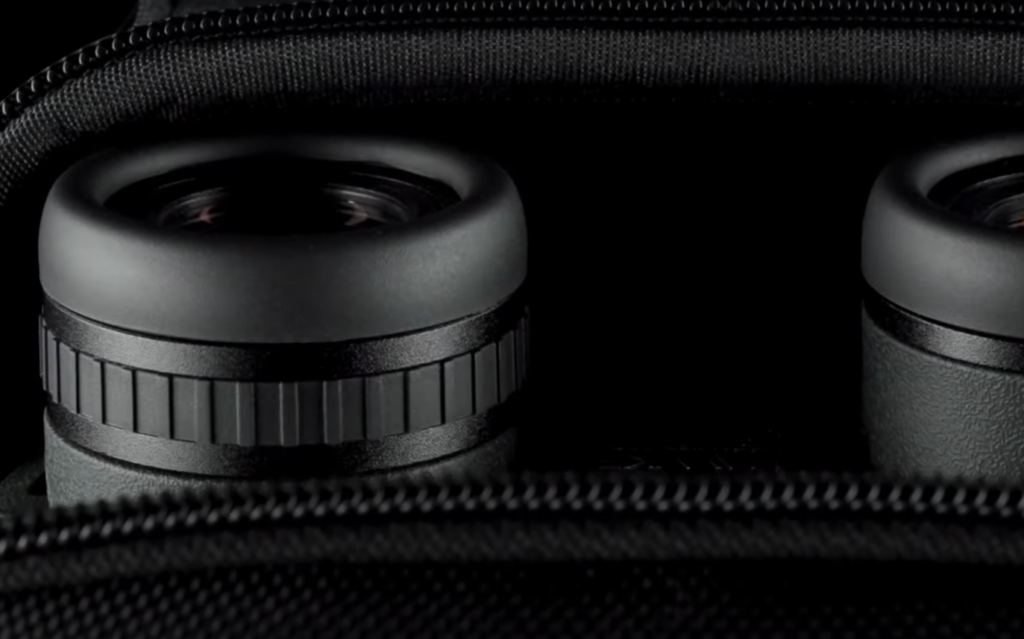
Another reason why 12x binoculars are not always the best choice for deer hunting is that they have a narrower field of view than lower magnification models. This can make it more difficult to find deer in the binoculars and to keep track of them if they move.
But, there are cases when 12x binoculars can be the best choice. If you are deer hunting in an open area where there is little vegetation, a 12x binocular will allow you to see deer at great distances.
You can also use a tripod with a 12x binocular to get an even steadier image.In general, most hunters find that binoculars with magnifications of between eight and ten power provide the best combination of distance and field of view for finding and tracking deer. [5]
But, ultimately, the best magnification for your binoculars depends on the type of hunting you are doing and the conditions you will be hunting in.
FAQ
What binocular magnification is best for deer hunting?
The answer to this question depends on a few factors, such as the size of the deer you’re hunting and the range at which you’ll be hunting them. For most hunters, however, a magnification of around eight or ten times is ideal. [6]
Are 10X42 binoculars good for deer hunting?
The simple answer is yes, but it depends on a few things. If you’re hunting in an area with thick brush, you might want to consider a lower magnification like the Nikon Prostaff. But if you’re hunting in open country, the extra power of the Bushnell Elite will give you a better view of distant deer. [7]
Are 10×50 binoculars good for deer hunting?
The answer to this question is yes! Not only are they good for deer hunting, but they’re also great for bird watching, nature observation, and even astronomy. [8]
What hunting binoculars should I buy?
There is no one-size-fits-all answer to this question, as the best binoculars for deer hunting depend on a number of factors. However, there are a few key things to keep in mind when choosing a pair of binoculars for deer hunting.
First and foremost, you’ll want to make sure that the binoculars you choose have a wide field of view. This will allow you to spot deer at long range, even if they’re moving around in thick brush.
It’s also critical to get binoculars with a lot of light-gathering capacity. This ensures that you’ll be able to see deer even in low light conditions.
Finally, make sure that the binoculars you choose are comfortable to use. Deer hunting can often involve long hours of waiting, so it’s important to have a pair of binoculars that won’t cause fatigue.
What power of binoculars is best for hunting?
This is a question that we get a lot, and the answer really depends on what you’re hunting and how far away your targets tend to be. If you’re deer hunting, for example, you’ll want binoculars with at least an eight-power magnification. This will allow you to see the deer clearly enough to take an accurate shot. If you’re bird hunting, on the other hand, you might be able to get by with less powerful binoculars since birds are often closer than deer.
We recommend that hunters select binoculars with an eight-power or higher magnification in general. This will give you the ability to see your target clearly, even if it’s quite far away. Of course, if you’re only hunting small game that is close to you, you can get by with lower power.
One thing to keep in mind is that the higher the magnification, the more difficult it will be to keep the binoculars steady. So if you have shaky hands, you might want to stick with lower power. Conversely, if you have very steady hands, you might be able to handle higher power.
Another factor to consider is the size of the objective lens. This is the front lens of the binoculars, and it determines how much light they let in. The bigger the objective lens, the brighter the image will be. This is especially important if you’re hunting in low light conditions such as dawn or dusk.
We recommend choosing binoculars with at least a 40mm objective lens. This will give you a bright, clear image. Of course, if you’re only hunting in good light, you can get by with a smaller objective lens.
Finally, you’ll want to consider the field of view. This is the width of the area that you can see through the binoculars. The larger the field of view, the easier it will be to find your target.
We recommend that hunters use binoculars with a 400-foot field of view. This will give you plenty of room to scan for your target without having to move your binoculars too much. Of course, if you’re only hunting in a small area, you can get by with a smaller field of view.
What makes good binoculars for hunting?
There are several elements to consider before purchasing the greatest binoculars for deer hunting. First, you’ll want to think about what magnification you need. For deer hunting, we recommend at least a 12x power. This will allow you to see the deer at a distance and get a good look at them. Second, you’ll want to make sure the binoculars are durable and can withstand being dropped or bumped around. Look for binoculars with rubber armor or a tough casing. Third, you’ll want to choose binoculars that have good light-gathering capabilities. This means that they should be able to perform well in low-light conditions like early morning or evening hunts. Finally, consider getting binoculars with a built-in rangefinder. This can be a valuable tool for deer hunting, as it will help you estimate the distance to your target.
Useful Video: Hunting Binoculars – Choosing the BEST pair
Conclusion
Binoculars can help you spot deer from far away, which is especially helpful if you’re trying to avoid scaring them off. But with so many different types and brands of binoculars on the market, it can be tough to know which ones are the best for deer hunting. We hope our guide has helped you understand the different factors to consider when choosing the best binoculars for deer hunting. With so many great options on the market, it can be tough to make a decision. But if you keep our advice in mind, we’re sure you’ll be able to find the perfect pair of binoculars for your needs. Happy hunting!
References:
- https://www.outdoorlife.com/10-things-to-know-before-you-buy-your-first-pair-binoculars/
- https://worldbirds.com/best-binoculars-for-hunting/
- https://argalioutdoors.com/advice/how-pick-best-size-binoculars-big-game-hunting-part-1
- https://www.huntershandbook.com/articles-1/2019/11/27/how-to-adjust-your-binocular
- https://worldbirds.com/best-12×50-binoculars/
- https://www.advancedhunter.com/best-binoculars-for-hunting/
- https://www.deerhuntingguide.net/best-hunting-binoculars.html
- https://beardedbutchers.com/blogs/news/best-binoculars-for-hunting/

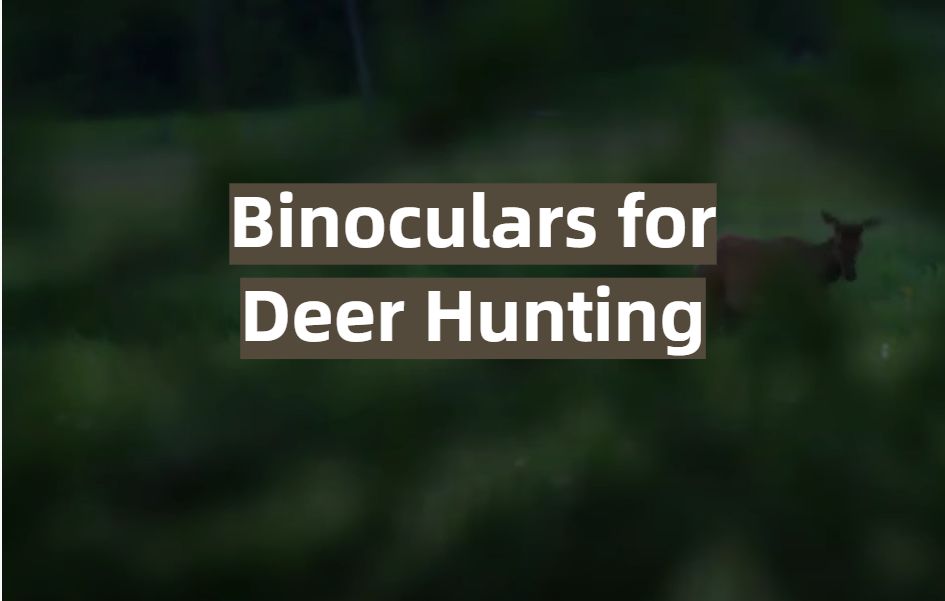




Leave a Reply